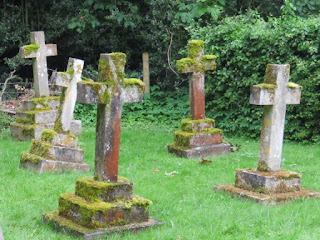Smallpox a common cause of death
In the 17th and 18th century smallpox was a common cause of death. It caused the death of rich and poor alike. It killed several reigning monarchs including Queen Mary II of England, Czar Peter II of Russia and King Louis XV of France. On 10th October 1562 Queen Elizabeth I was taken ill at Hampton Court Palace, with what was thought to be a bad cold, this developed into a violent fever. The queen had smallpox and it was feared that the she would die. Fortunately, Elizabeth survived the disease and was not too badly scarred. It is estimated that in Europe at this period 400,000 commoners died each year due to smallpox.
Smallpox is an infectious disease caused by a virus. It is an extremely contagious and deadly virus for which there is no known cure. The person is infectious from the when the fever develops until the last scabs fall off. Smallpox is transmitted from person to person contact and has an incubation period is 7 to 17 days. Smallpox causes a high fever, flu like symptoms of malaise, vomiting, headache and this is followed by a characteristic rash that develops 2 - 3 days later, the rash develops into pus filled blisters. Smallpox kills a third of those infected with the disease, while those who survive often suffer from bad scarring with deep pitted scars, most prominent the face.
Survivors of the disease were often called upon to try and nurse victims as it was known that no one could contract smallpox twice. In 1796 Edward Jenner, an English doctor, carried out an experiment that lead ultimately to the eradication of smallpox. He took pus from a milkmaid with cowpox and inserted it into a young boy. Later he exposed the boy to smallpox and no disease developed. The vaccine had been successful, and this was the start of vaccination against infectious diseases. Smallpox vaccination spread around the world and saved the lives of millions. In 1980 the World Health Organisation certified the global eradication of smallpox. The last naturally occurring case was in 1977.
Did Your Ancestors Die of Smallpox?
The chances are you would not know your ancestors died of smallpox unless some kind parish clerk has recorded the cause of death in the burial registers. In the parish of Basingstoke in the 1740s the parish clerk has done just that. It shows that in 1741 there was an outbreak of smallpox in Basingstoke. In April 1741 there was one death due to smallpox and none between May and August. However, between 9th September and 30th September there were 15 smallpox deaths recorded. In the month of October the epidemic reached a peak and there were 61 smallpox deaths. The figures reduced to 29 deaths in November and just 5 smallpox deaths in December. In the 18th century Basingstoke was a small market town. Even by the end of the century there was only a population of 2,500, so the death of 105 individuals from smallpox in 1741 was quite a significant decrease in the population.
Joshua Titheridge
One of the individuals who suffered from this outbreak of small pox was Joshua Titheridge. The parish records show he was buried on 22 September 1741, buried in cloth and died from small pox.
So, who was Joshua? Joshua was baptised on 21 June 1701 one of 10 children born in Kingsclere, Hampshire to Joshua Titheridge and Margaret Butt (sometimes recorded as Bull). The Titheridge surname is also recorded as Titteridge, Tytheridge and Tetheridge. Joshua married Anne Moore on 3 November 1735 in Basingstoke and they had three children Anne who was born and died in 1735, a second daughter called Anne who was born in 1737 and John who was born in September 1740 and died in May 1741 just a few months before Joshua. Joshua was just 40 years old when he died from smallpox; his widow Ann lived another 40 years, her burial being recorded in December 1781 in Basingstoke. After the death of Joshua's nephew, Richard, in Basingstoke in 1785 the Titheridge line in Basingstoke dies out.
The Titheridges of Kingsclere and Basingstoke
(Click on the family tree to enlarge it)


